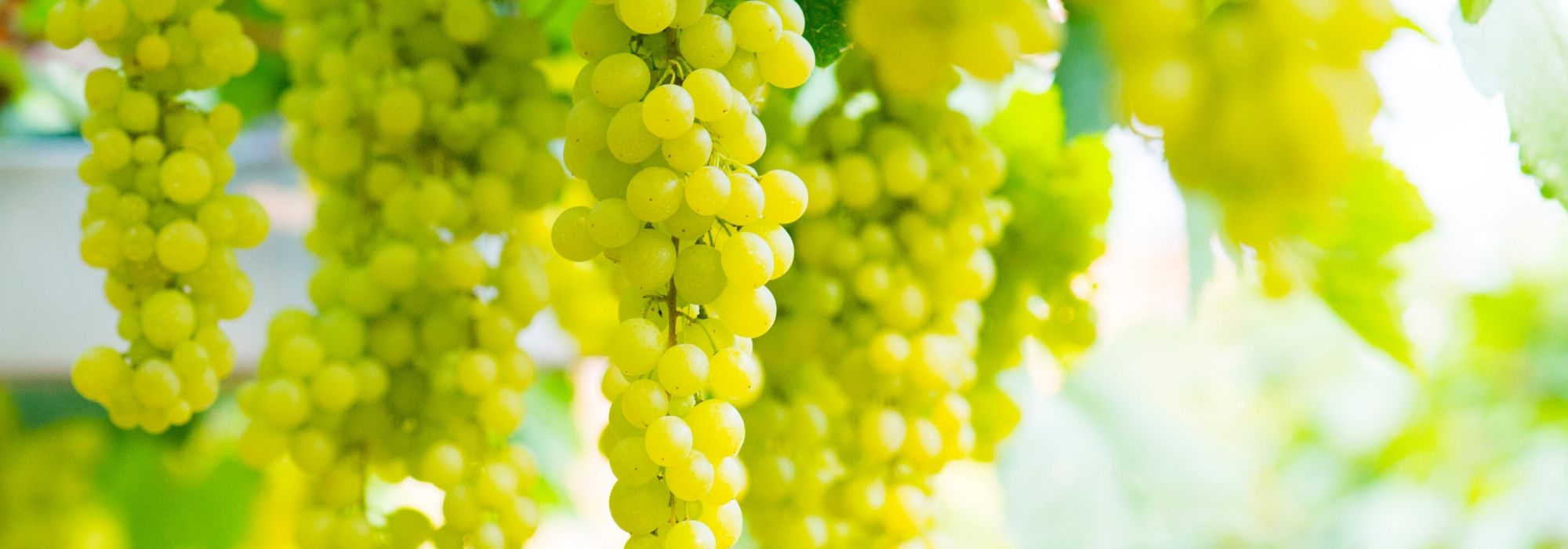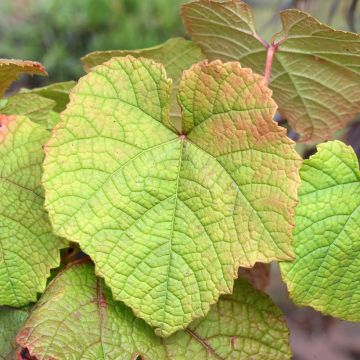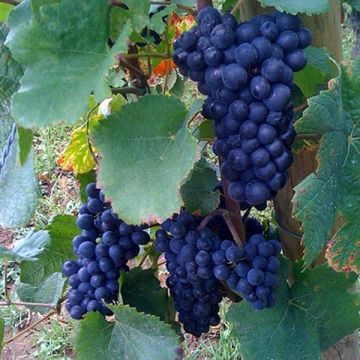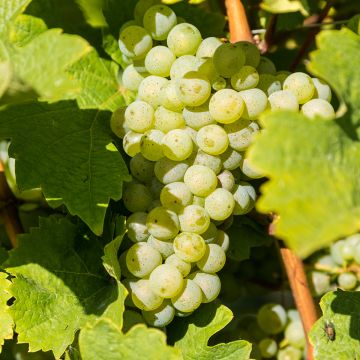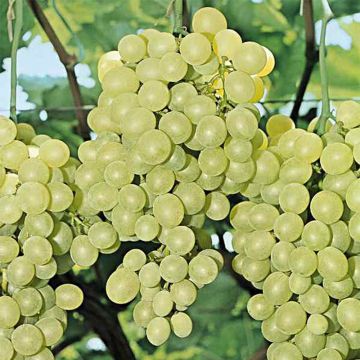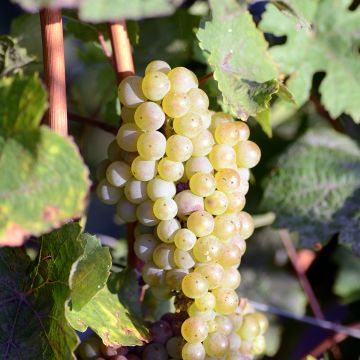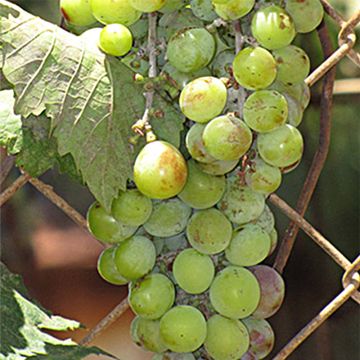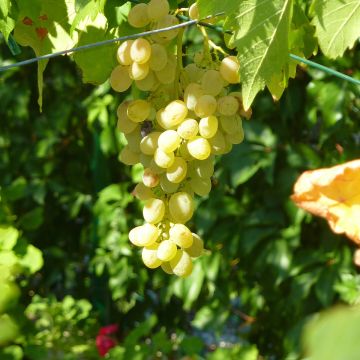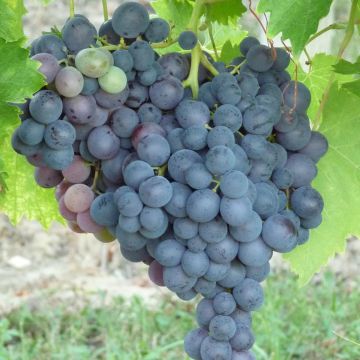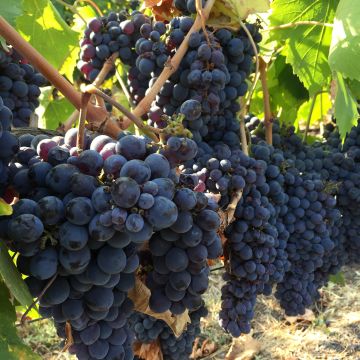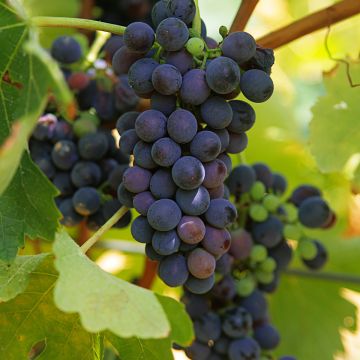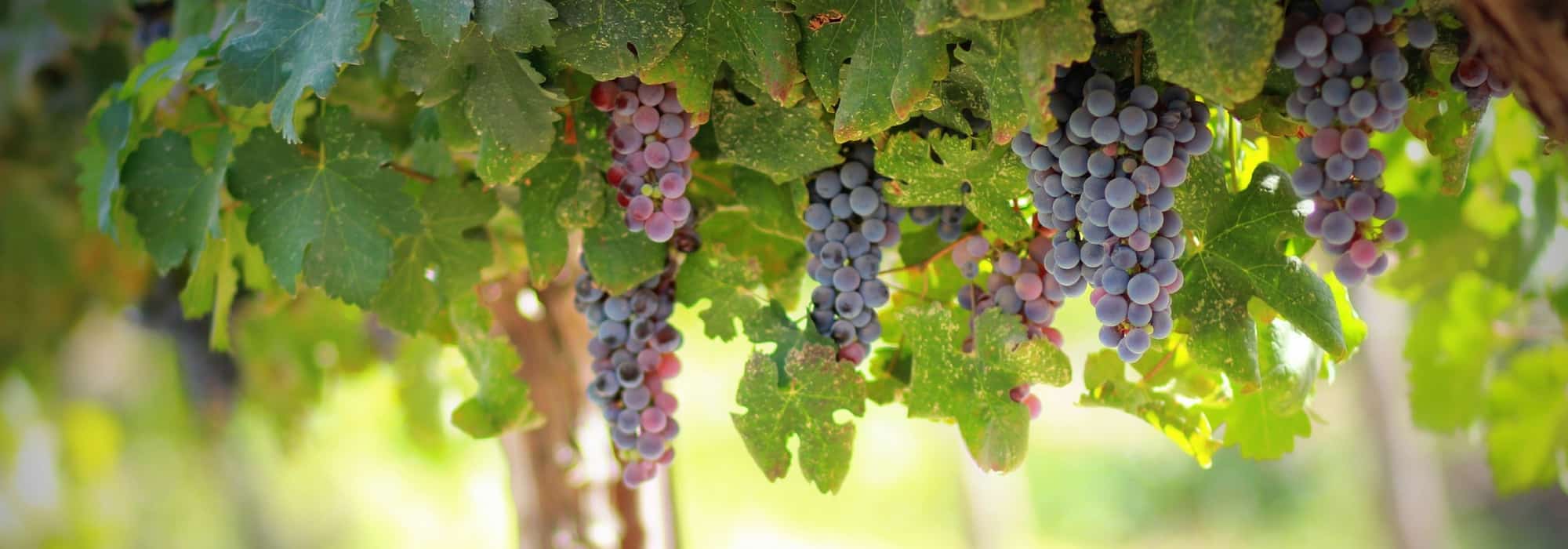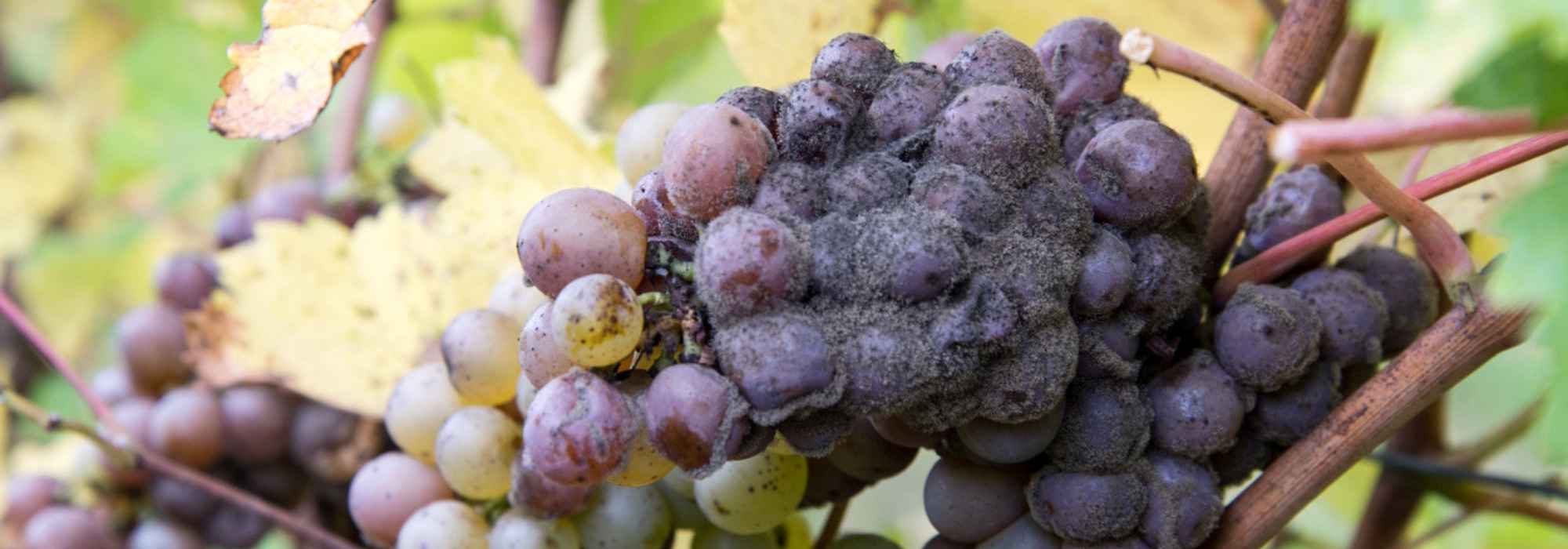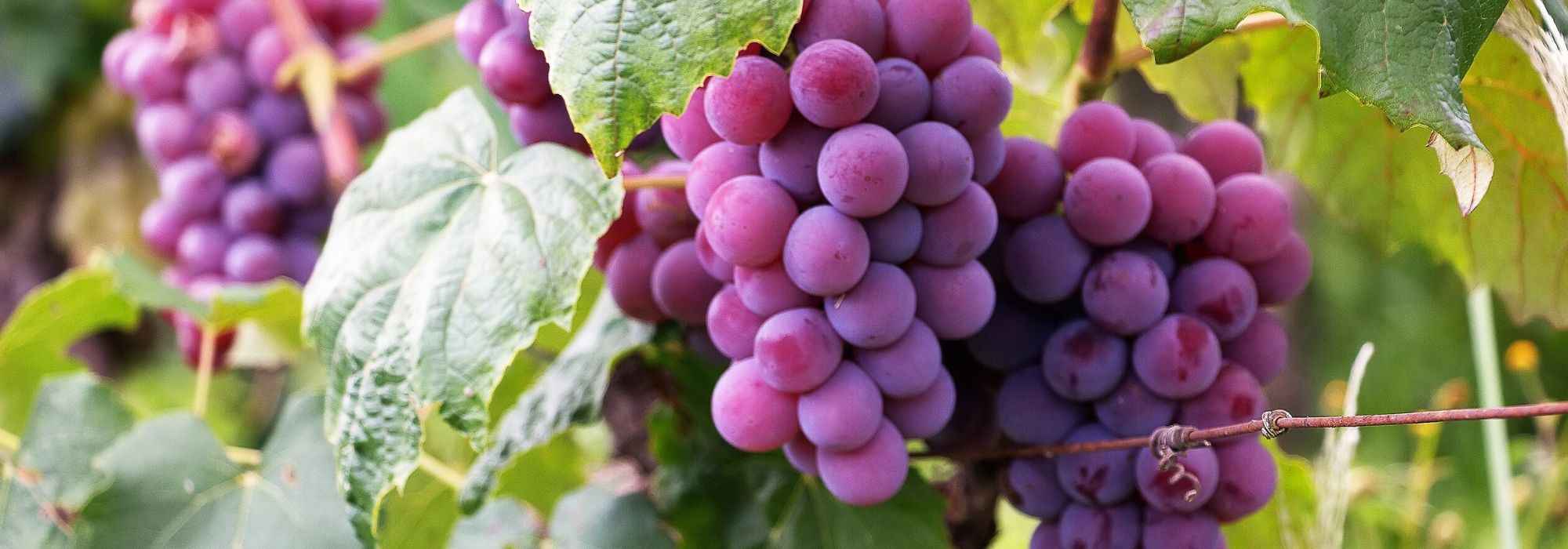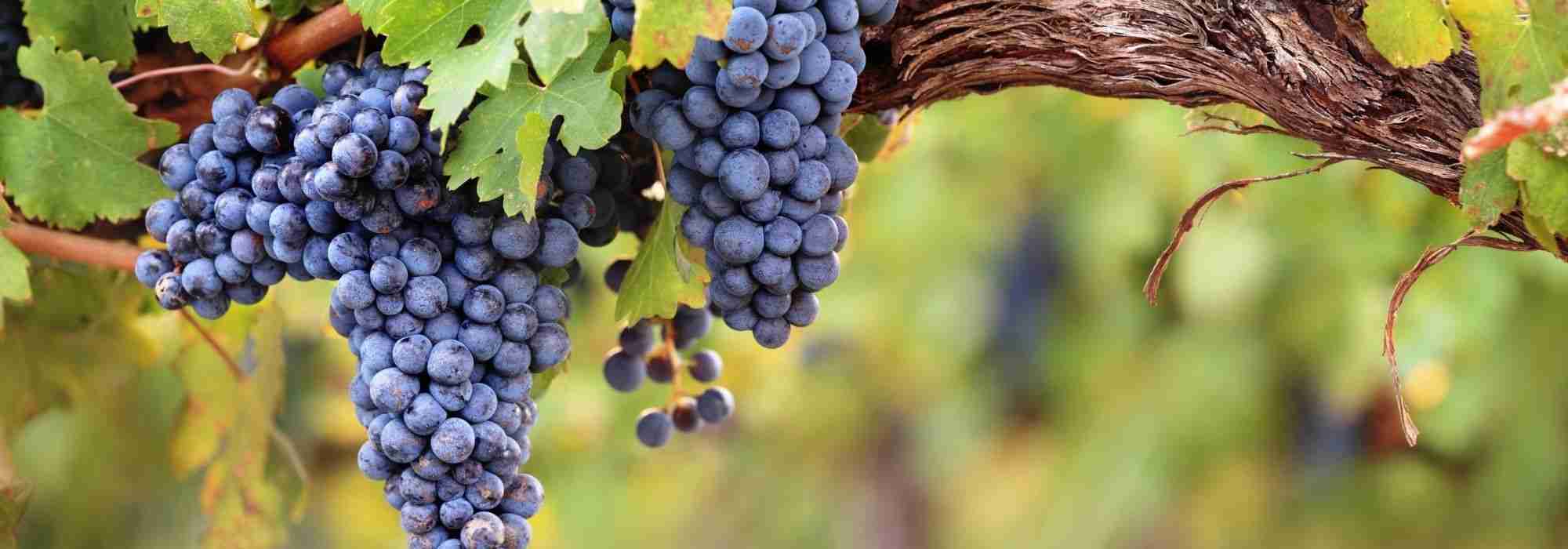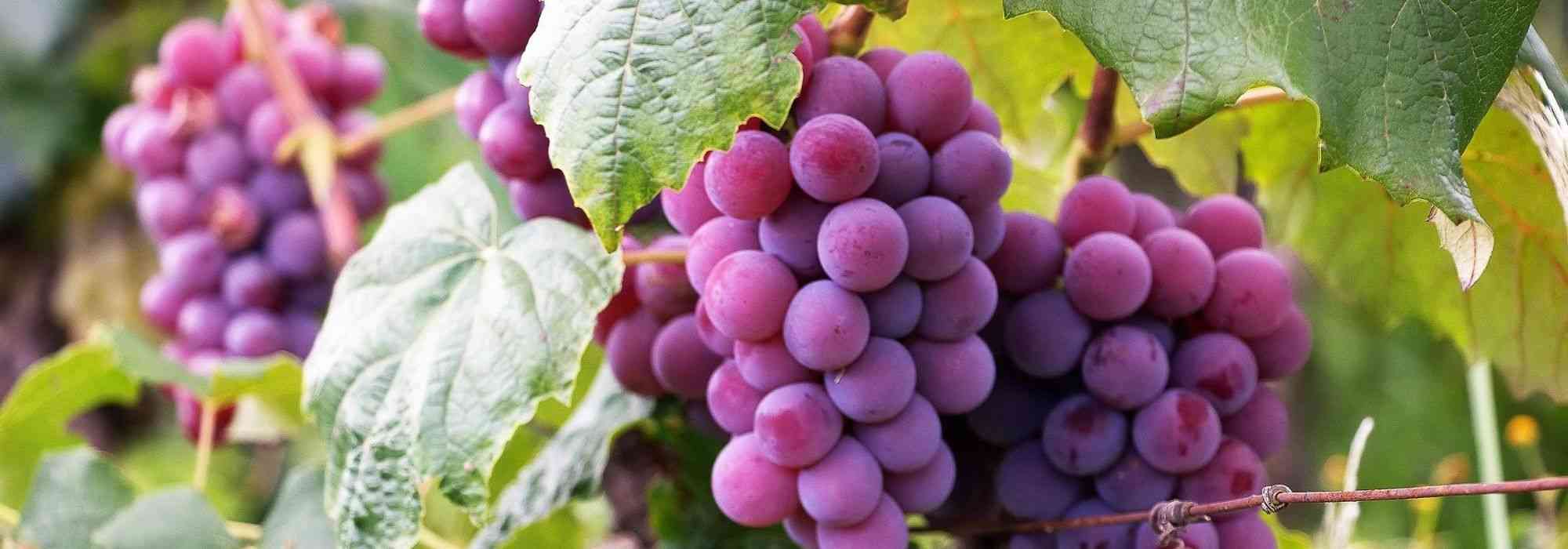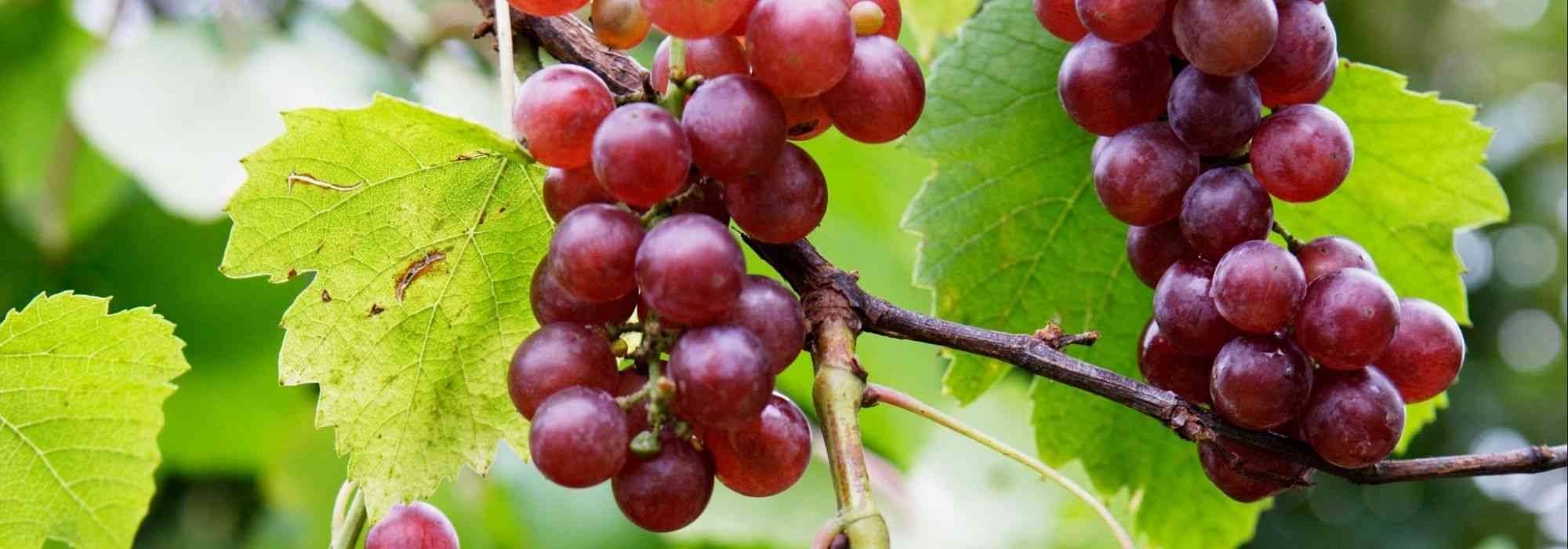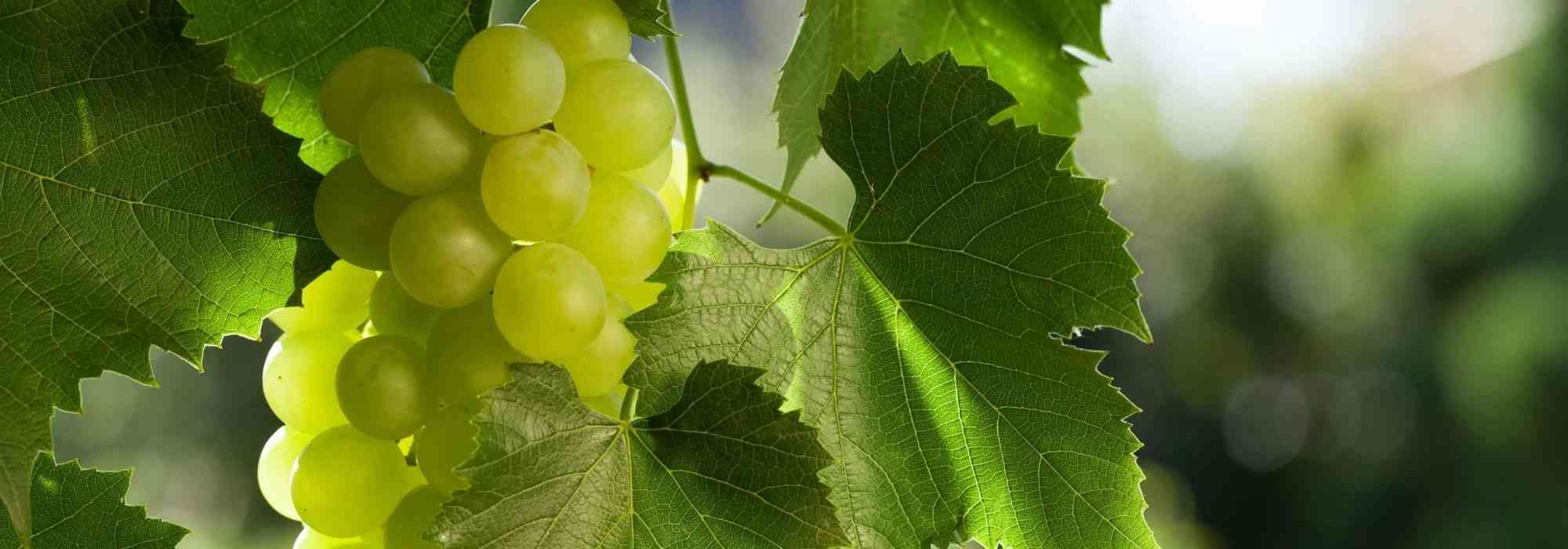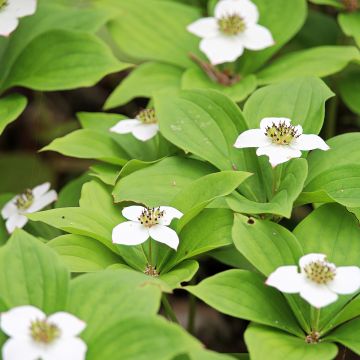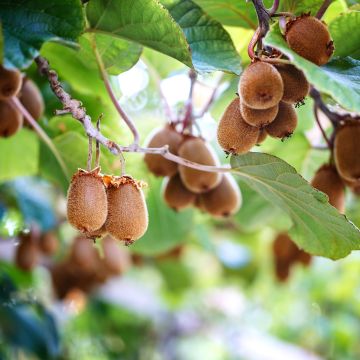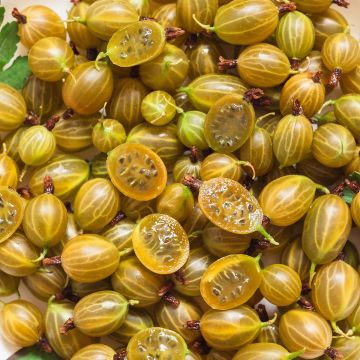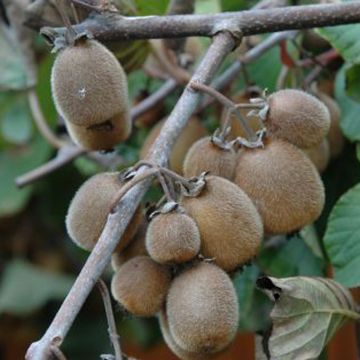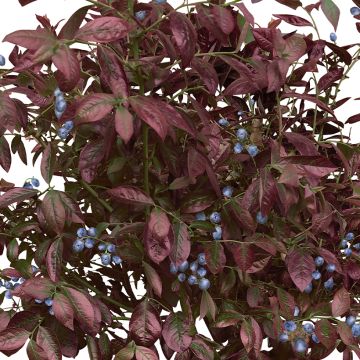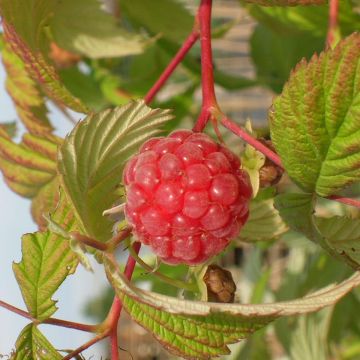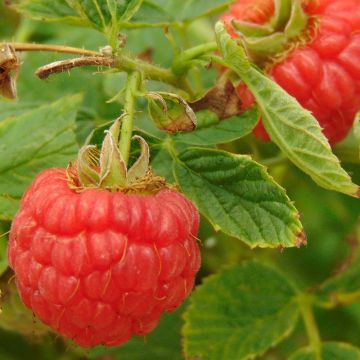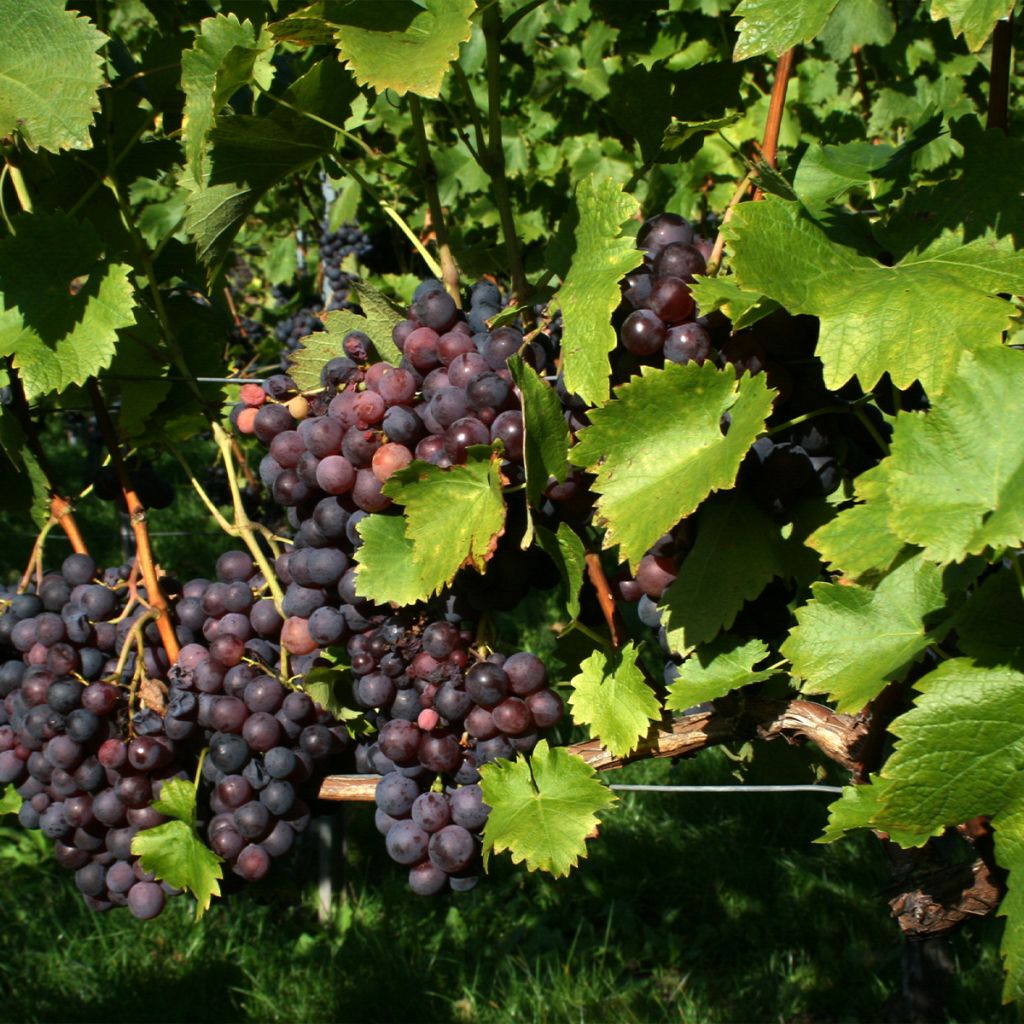

Vitis viniferaFrankenthaler - Grape vine
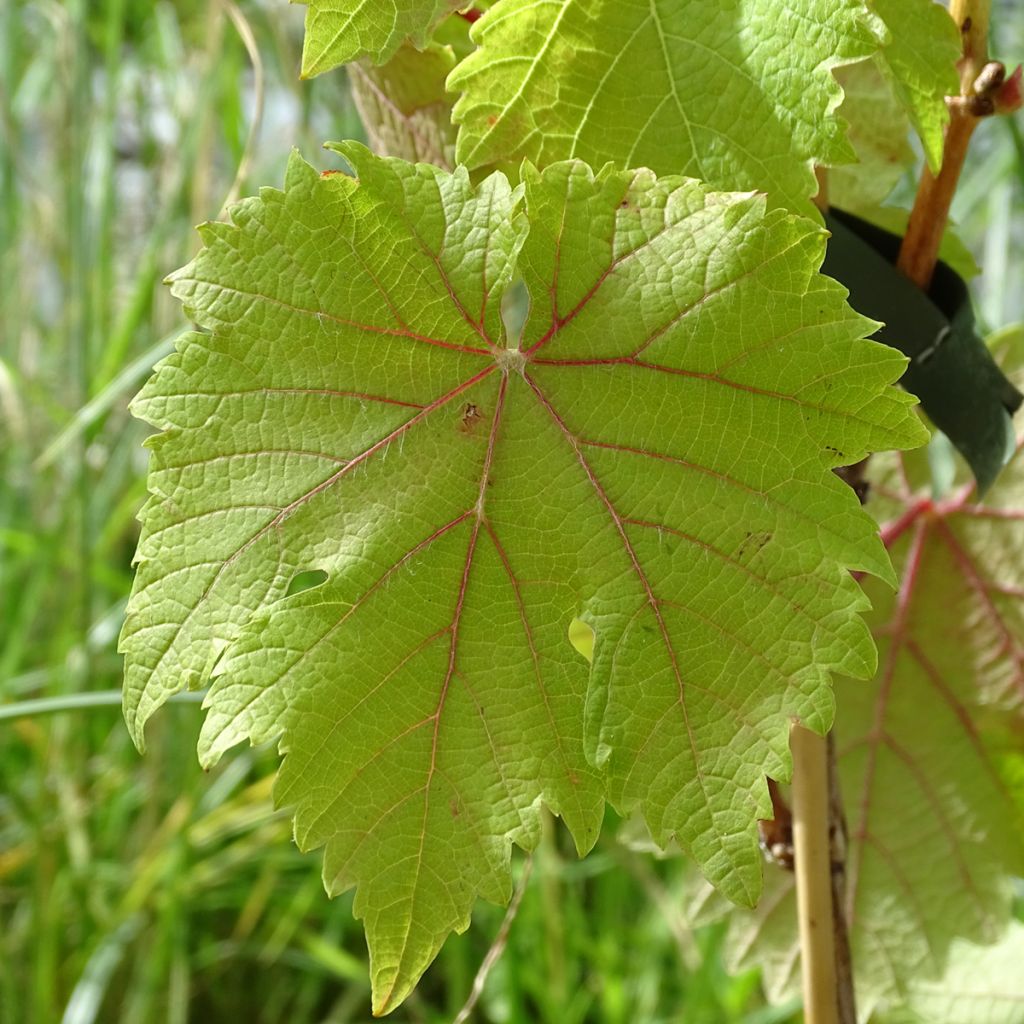

Vitis viniferaFrankenthaler - Grape vine
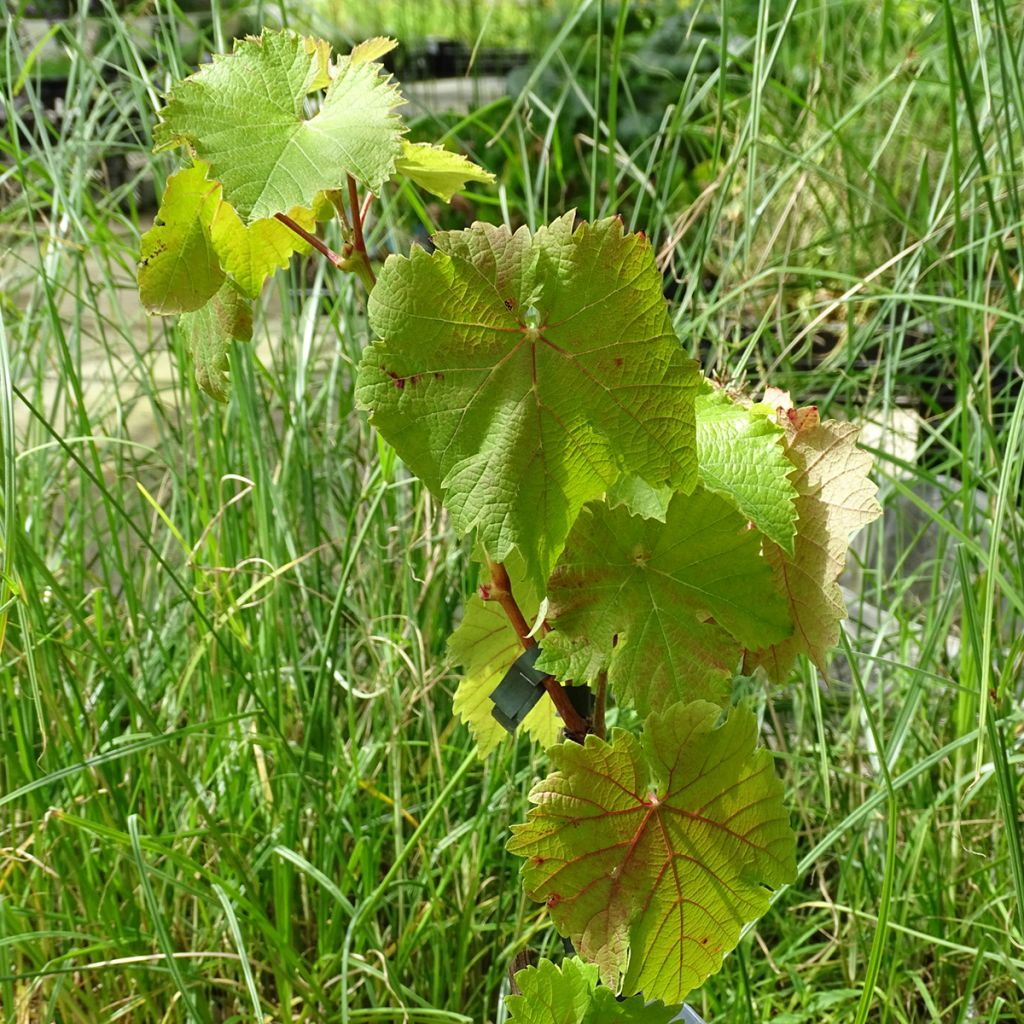

Vitis viniferaFrankenthaler - Grape vine
Vitis viniferaFrankenthaler - Grape vine
Vitis vinifera Frankenthaler
Common Grape Vine, European Grape, Wine Grape
As much as I have been pleasantly surprised several times by the PDF website, this vine-plant I received was really too small.
Guillaume , 11/07/2024
Special offer!
Receive a €20 voucher for any order over €90 (excluding delivery costs, credit notes, and plastic-free options)!
1- Add your favorite plants to your cart.
2- Once you have reached €90, confirm your order (you can even choose the delivery date!).
3- As soon as your order is shipped, you will receive an email containing your voucher code, valid for 3 months (90 days).
Your voucher is unique and can only be used once, for any order with a minimum value of €20, excluding delivery costs.
Can be combined with other current offers, non-divisible and non-refundable.
Home or relay delivery (depending on size and destination)
Schedule delivery date,
and select date in basket
This plant carries a 6 months recovery warranty
More information
We guarantee the quality of our plants for a full growing cycle, and will replace at our expense any plant that fails to recover under normal climatic and planting conditions.
Description
Vitis vinifera 'Frankenthaler' is a very old variety, originating from Austria. This vigorous vine can reach a height of 5m (16ft) or more. Highly productive, it is renowned as one of the easiest to cultivate. It produces juicy black grapes that can be consumed fresh or used for winemaking. An early variety, its berries are ready to be harvested at the end of August. It requires a long, hot summer to fruit well. It does not tolerate excessive humidity, so it should be planted in full sun in well-drained soil. Although hardy, this variety is somewhat susceptible to the usual vine diseases.
Vitis vinifera grew wild over 5000 years ago in North and Central America, Europe, and Central and Eastern Asia. The subspecies sylvestris still exists. It is a climbing vine, growing at the edge of forests. It can reach great heights in trees. The current varieties, known as grape varieties in the case of the vine, are classified under the subspecies vinifera (although there are other cultivated species, but they are very minor). Economically, wine grapes dominate table grapes, with over 200 authorised grape varieties in France, the result of centuries of selection work.
'Frankenthaler', also known as 'Trollinger' and 'Black Hamburg', can be found in many countries such as Austria - its country of origin - Germany, Belgium, the Netherlands, Hungary, Slovenia, Croatia, Portugal, Italy, England, Chile, and even Australia. This variety is said to have been obtained in the second half of the 18th century in Tyrol (Austria), or perhaps in Franconia (Germany). It was long grown under glass in the west, north, and east of France, as well as in Belgium and England to produce table grapes. 'Frankenthaler' can also be used for winemaking, although it produces wine of average quality.
This vigorous and upright variety reaches a height of 5m (16ft) (and even much more if not pruned) with an equal spread. It has beautiful medium green leaves that are somewhat glossy, usually with 3 well-defined lobes. The foliage takes on beautiful autumn colours, ranging from butter yellow to red, giving it a slightly ornamental aspect. Its early summer flowering produces beautiful, medium to large clusters with a distinctly conical shape. Like most grapes, it is a self-fertile variety. The berries are medium to large in size, and spherical or slightly ovoid. They are initially reddish-purple, turning to blackish-purple when ripe, with a slight bloom. These berries are ready to be harvested from late August, provided they have benefited from a warm summer. The flesh is firm and juicy, but the sugar content and flavour vary. Given its heat requirements, it is necessary to perform green pruning to remove certain leaves so that the grapes are exposed to the sun.
'Frankenthaler' is susceptible to various vine diseases, such as mildew, powdery mildew, and botrytis. Due to its heat requirement, it is wise to train it against an exposed stone wall so that it can make the most of the sun. In general, grapes are rich in vitamin B, fibre, and manganese, and they are also well supplied with antioxidants. They are believed to play a role in preventing cardiovascular diseases. Above all, they are a healthy, natural, and delicious dessert. To enjoy different flavours, plant a white grape variety such as Fragola Bianca alongside it, with its exceptional aroma. Or try the thornless Navaho blackberry, which can be enjoyed fresh or cooked in desserts or jellies.
Vitis viniferaFrankenthaler - Grape vine in pictures
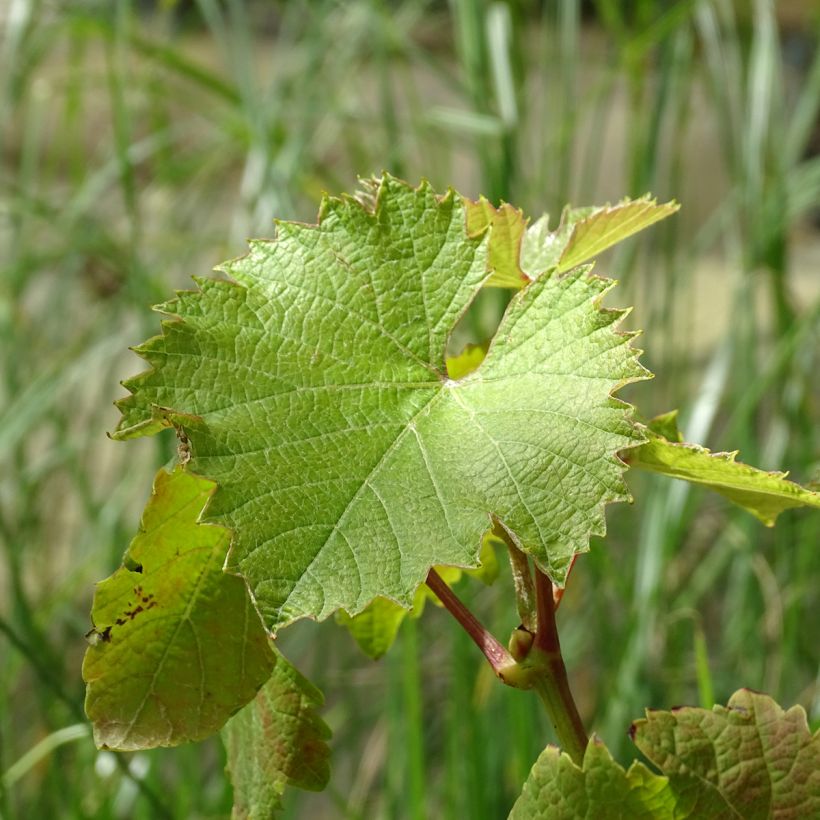

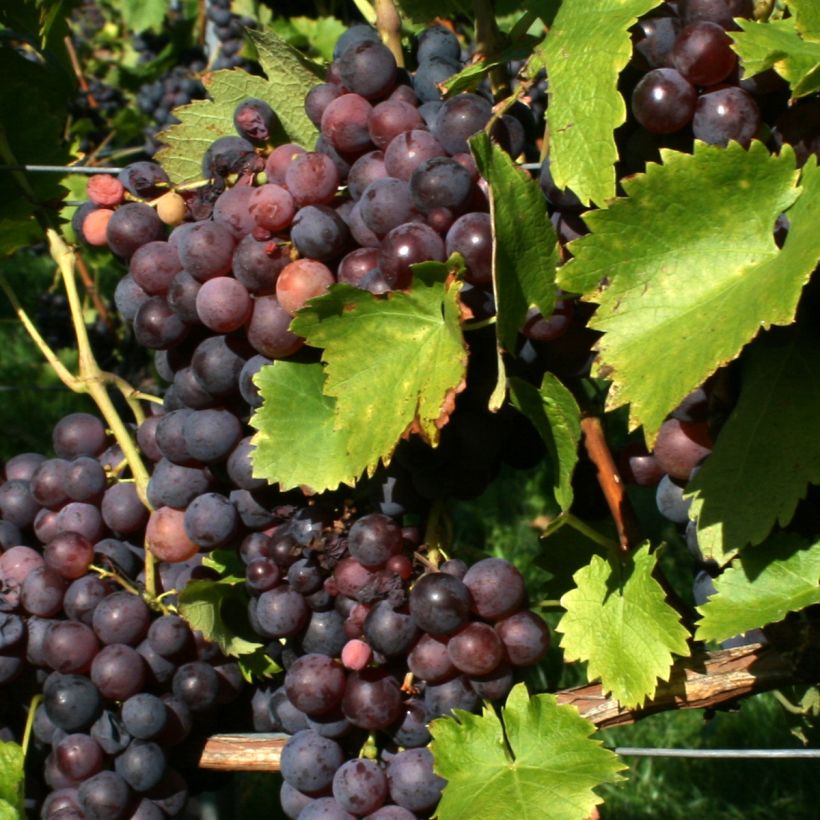

Plant habit
Fruit
Flowering
Foliage
Botanical data
Vitis
vinifera
Frankenthaler
Vitaceae
Common Grape Vine, European Grape, Wine Grape
Cultivar or hybrid
Other Grapevines
View all →Planting and care
Since the ravages of phylloxera at the end of the 19th century, the vine is obligatorily grafted onto different resistant rootstocks adapted to different types of soil. These rootstocks come from American varieties naturally armed against this formidable parasite, which is itself of American origin.
Plant 'Frankenthaler' in autumn. Plant it in deep, well-drained soil. It will tolerate stony, clayey, and chalky soil. It is not very demanding regarding the chemical nature of the soil. It can adapt to moderately acidic soil (up to pH 6 approximately, as below this level there are assimilation blockages of certain trace elements), neutral, and limestone soil up to pH 8.5 approximately (knowing that in this case, it is actually an excess of active limestone that is detrimental).
Plant it in a sunny location, sheltered from strong, cold, and dry winds. This variety withstands winter frosts, and is hardy down to -20 to -25°C (-4 to-13°F). Incorporate 3 or 4 handfuls of fertiliser for fruit trees and 2kg of composted manure for each vine into the planting soil. The roots should not come into contact with the manure. After planting, prune above 2 large buds to obtain the growth of two shoots. Keep the most vigorous one and tie it to a stake. This will be followed by training pruning.
It does not require regular fertilisation for good yield. In overly rich soil, vegetation will develop at the expense of fruiting. Enrich the soil with potash slag, crushed horn, or iron chelate, but only every 2-3 years.
It is relatively sensitive to powdery mildew and botrytis, which should be monitored in order to treat them in time, especially with copper-based products.
Planting period
Intended location
Care
Planting & care advice
-
, onOrder confirmed
Reply from on Promesse de fleurs
Similar products
Haven't found what you were looking for?
Hardiness is the lowest winter temperature a plant can endure without suffering serious damage or even dying. However, hardiness is affected by location (a sheltered area, such as a patio), protection (winter cover) and soil type (hardiness is improved by well-drained soil).

Photo Sharing Terms & Conditions
In order to encourage gardeners to interact and share their experiences, Promesse de fleurs offers various media enabling content to be uploaded onto its Site - in particular via the ‘Photo sharing’ module.
The User agrees to refrain from:
- Posting any content that is illegal, prejudicial, insulting, racist, inciteful to hatred, revisionist, contrary to public decency, that infringes on privacy or on the privacy rights of third parties, in particular the publicity rights of persons and goods, intellectual property rights, or the right to privacy.
- Submitting content on behalf of a third party;
- Impersonate the identity of a third party and/or publish any personal information about a third party;
In general, the User undertakes to refrain from any unethical behaviour.
All Content (in particular text, comments, files, images, photos, videos, creative works, etc.), which may be subject to property or intellectual property rights, image or other private rights, shall remain the property of the User, subject to the limited rights granted by the terms of the licence granted by Promesse de fleurs as stated below. Users are at liberty to publish or not to publish such Content on the Site, notably via the ‘Photo Sharing’ facility, and accept that this Content shall be made public and freely accessible, notably on the Internet.
Users further acknowledge, undertake to have ,and guarantee that they hold all necessary rights and permissions to publish such material on the Site, in particular with regard to the legislation in force pertaining to any privacy, property, intellectual property, image, or contractual rights, or rights of any other nature. By publishing such Content on the Site, Users acknowledge accepting full liability as publishers of the Content within the meaning of the law, and grant Promesse de fleurs, free of charge, an inclusive, worldwide licence for the said Content for the entire duration of its publication, including all reproduction, representation, up/downloading, displaying, performing, transmission, and storage rights.
Users also grant permission for their name to be linked to the Content and accept that this link may not always be made available.
By engaging in posting material, Users consent to their Content becoming automatically accessible on the Internet, in particular on other sites and/or blogs and/or web pages of the Promesse de fleurs site, including in particular social pages and the Promesse de fleurs catalogue.
Users may secure the removal of entrusted content free of charge by issuing a simple request via our contact form.
The flowering period indicated on our website applies to countries and regions located in USDA zone 8 (France, the United Kingdom, Ireland, the Netherlands, etc.)
It will vary according to where you live:
- In zones 9 to 10 (Italy, Spain, Greece, etc.), flowering will occur about 2 to 4 weeks earlier.
- In zones 6 to 7 (Germany, Poland, Slovenia, and lower mountainous regions), flowering will be delayed by 2 to 3 weeks.
- In zone 5 (Central Europe, Scandinavia), blooming will be delayed by 3 to 5 weeks.
In temperate climates, pruning of spring-flowering shrubs (forsythia, spireas, etc.) should be done just after flowering.
Pruning of summer-flowering shrubs (Indian Lilac, Perovskia, etc.) can be done in winter or spring.
In cold regions as well as with frost-sensitive plants, avoid pruning too early when severe frosts may still occur.
The planting period indicated on our website applies to countries and regions located in USDA zone 8 (France, United Kingdom, Ireland, Netherlands).
It will vary according to where you live:
- In Mediterranean zones (Marseille, Madrid, Milan, etc.), autumn and winter are the best planting periods.
- In continental zones (Strasbourg, Munich, Vienna, etc.), delay planting by 2 to 3 weeks in spring and bring it forward by 2 to 4 weeks in autumn.
- In mountainous regions (the Alps, Pyrenees, Carpathians, etc.), it is best to plant in late spring (May-June) or late summer (August-September).
The harvesting period indicated on our website applies to countries and regions in USDA zone 8 (France, England, Ireland, the Netherlands).
In colder areas (Scandinavia, Poland, Austria...) fruit and vegetable harvests are likely to be delayed by 3-4 weeks.
In warmer areas (Italy, Spain, Greece, etc.), harvesting will probably take place earlier, depending on weather conditions.
The sowing periods indicated on our website apply to countries and regions within USDA Zone 8 (France, UK, Ireland, Netherlands).
In colder areas (Scandinavia, Poland, Austria...), delay any outdoor sowing by 3-4 weeks, or sow under glass.
In warmer climes (Italy, Spain, Greece, etc.), bring outdoor sowing forward by a few weeks.






























